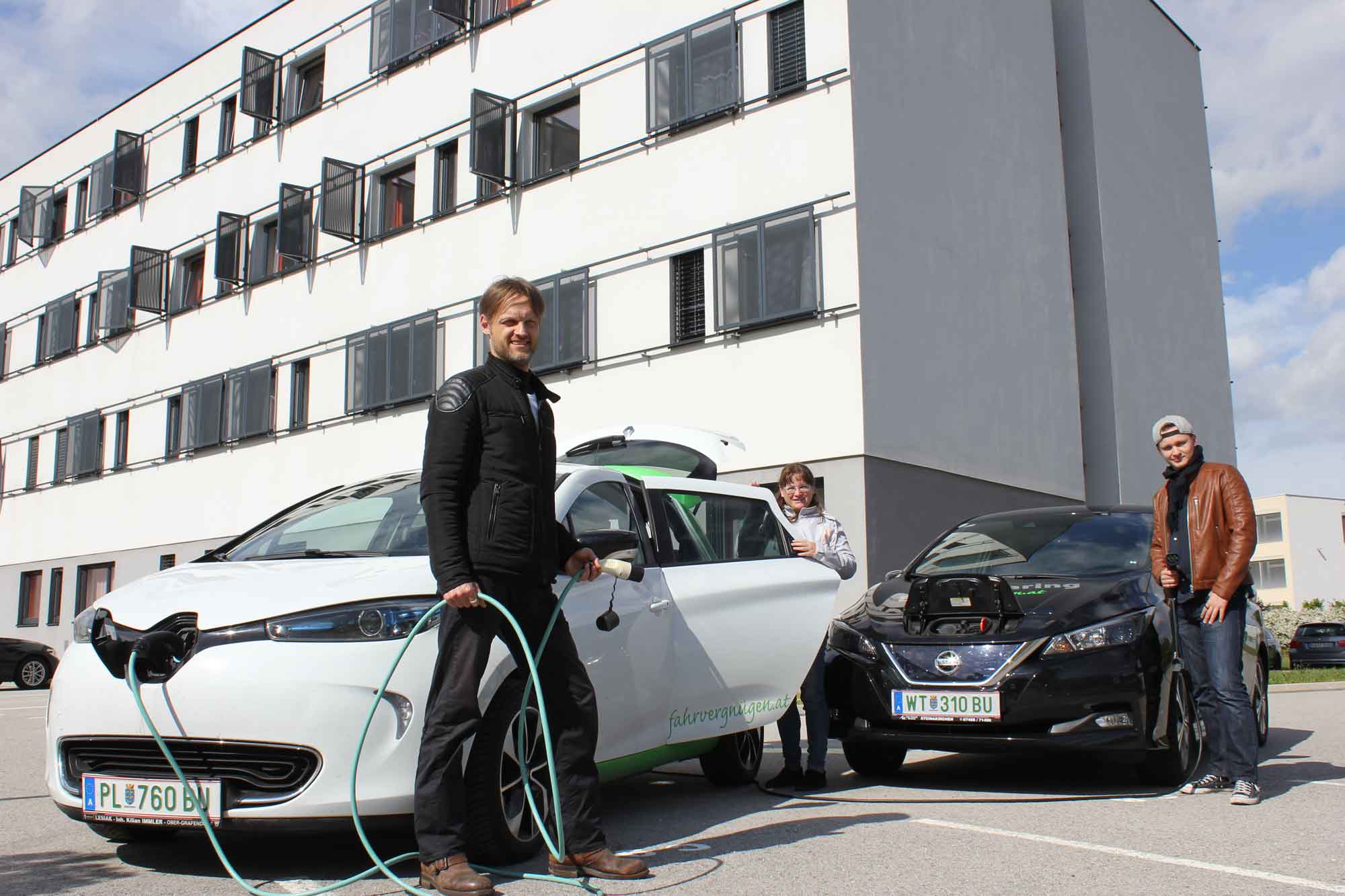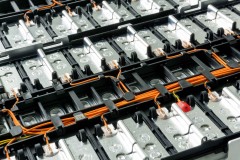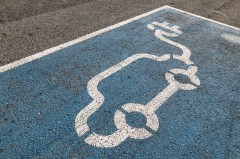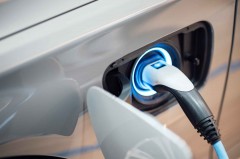Electric mobility can make a significant contribution to reducing the high environmental impact in the transport sector. However, sustainable concepts are needed to integrate the increasing number of e-vehicles into our energy system. One innovative approach is to use the batteries of electric vehicles as a storage option in the future and thereby ensure stabilisation for the entire energy system. Technologies for controlled, flexible charging and discharging of vehicles could help to integrate as many renewable energy sources as possible and balance out fluctuations between power generation and consumption. The batteries are charged when there is a surplus of wind and solar energy. The energy stored in the vehicle battery is then released back into the power grid to compensate for peak loads.
Concepts for different mobility needs
In the Car2flex lead project, concepts, suitable technologies and business models are being developed for various electric mobility user groups. Under the leadership of the TU Wien, this project involves cooperation between 19 partners1 from the fields of energy supply, research and technology development. The focus is on private users of electric vehicles, e-vehicle fleets (e.g. in companies) and e-car sharing in apartment buildings. The question is how the increasing share of e-mobility can be optimally integrated into the energy system while taking different mobility needs into account. An important basis for this is information about when e-cars are charged, how much charge is needed on average and how often and for how long the vehicles are travelling. These data are generated for the three user groups. Building on this, new technologies and concepts for making charging and discharging processes more flexible are to be tested in practice in the three application areas. A participatory process with users (private individuals and companies) and relevant stakeholders (e.g. housing developers, charging station operators, etc.) is supporting the developments.

Smart optimisation of electric mobility
The central technology for the interaction between the electric vehicle and the power grid is bidirectional charging of the electric cars. This enables communication and interoperability between charging pillars, cars and building services. Among other things, the Car2Flex project uses bidirectional DC charging points (direct current), with which the locally generated PV electricity can be used directly as direct current and no longer has to be converted into alternating current. The bidirectional function also allows the charging pillar to draw power from the car battery and makes it possible to deliver power back to the grid. Specially developed algorithms are used for optimised charging and discharging, e.g. to reduce peak loads and for integration between aggregator and booking platforms.
Economic incentives
The innovative Car2Flex concepts are intended to create new economic incentives, e.g. with solutions that increase the internal consumption of PV electricity through intermediate storage in the battery of a vehicle. This optimised flexible battery use can increase the share of renewable energy generation and use and also save costs.
Testing e-car sharing
One focus of the project is on concepts for e-car sharing providers. An e-car sharing service is to be established and tested in a multi-storey residential building. The operators can use a booking system (app) to track where each e-car is located at which charging pillar and its charging status around the clock. The batteries of the vehicles offer potential for additional flexibility, as they can be charged in a controlled manner when there is a surplus of electricity and discharged when there is a demand for electricity. The concept is also interesting for aggregators who combine (aggregate) individual flexibilities and market these further.
greenenergylab.at/en/projects/car2flex/
1 Project Partners TU Wien/Institute of Energy Systems and Electrical Drives/Energy Economics Group (EEG) (project management), AED Systems KG, AIT Austrian Institute of Technology GmbH, ecoplus. Niederösterreichs Wirtschaftsagentur GmbH, Energie Burgenland AG, Energie Steiermark AG, EVN AG, University of Applied Sciences Technikum Wien, Forschung Burgenland GmbH, Fronius International GmbH, Grazer Energieagentur Ges.m.b.H., im-plan-tat Raumplanungs GmbH & Co KG, JOANNEUM RESEARCH Forschungsgesellschaft mbH, The University of Leoben – EVT, NÖ Energie- und Umweltagentur GmbH (eNu), Salzburg Netz GmbH, Schrack Technik Energie GmbH,
Spectra Today GmbH, Stromnetz Graz GmbH & Co KG
A project within the framework of the Energy Flagship Region Green Energy Lab
greenenergylab.at/en



